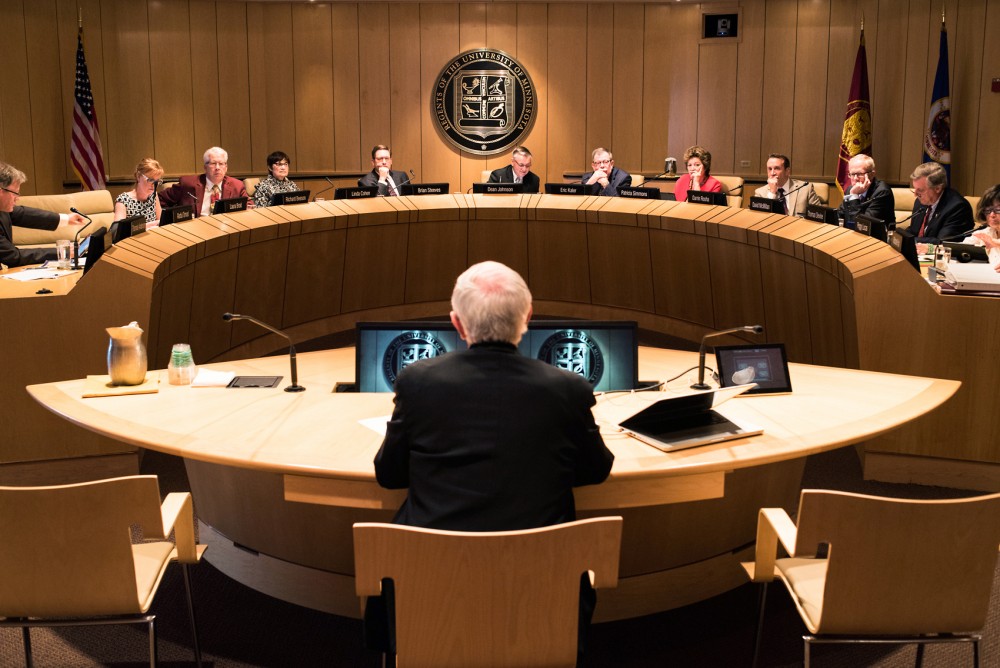University of Minnesota students could see tuition hikes next year.
At last week’s board meeting, the University outlined preliminary tuition increases for Twin Cities campus students. Rates would remain the same for resident students across the system’s other four campuses.
For resident students, tuition would increase two percent, under the University’s budget framework presented Friday. Nonresident, non-reciprocity students would pay $2,221 — or 10 percent — more next year.
The school currently plans to freeze tuition for its coordinate campuses, though that plan may change as the budget process progresses.
Because of highly competitive geographic areas and low student population, administrators try hard to keep tuition frozen on the school’s system campuses, said board chair Dean Johnson.
A number of factors play into raising tuition, including rising real estate maintenance costs and faculty salaries,” he said.
“To have a great University, you need a great faculty, and to have great faculty, you need to compensate them,” Johnson said. “It’s a very competitive environment to keep great faculty.”
Administrators have also tied tuition increases to state funding levels. University President Eric Kaler has said tuition rates might increase even if lawmakers fully fund the school’s $147.2 million budget request.
But Regent Michael Hsu said state appropriations don’t have to be the deciding factor.
“Even if we don’t get the money from the state to freeze tuition, we could do it on our own by freezing expenses,” Hsu said. “That’s the thing people don’t realize: that we’re negotiating with the state by threatening a tuition increase, but we never really have to increase tuition.”
Minnesota Student Association President Abeer Syedah said students should voice concerns to legislators.
“We’ve been seeing these ridiculous long-term increases in tuition for some time,” she said. “Low tuition means a more diverse University and a more diverse state.”
Hsu also said the University should freeze or even lower tuition for resident students. Freezing tuition in the past has cost the school about $6 million, he said.
“For some reason we couldn’t find $6 million,” he said. “But we can find much more than $6 million to transition the football coach. How does that make any sense?”
Hsu said freezing salaries for administrators instead of raising them could also generate enough money for a freeze.
With the 10 percent jump for nonresidents, non-reciprocity students, Associate Vice President for Budget and Finance Julie Tonneson said the goal is to move the University up from the bottom of the Big Ten in nonresident tuition.
Still, the increase would rank the University 13th out of 14 schools in the Big Ten.
Hsu said nonresident students should pay more to supplement the cost of resident tuition.
“Out of state students are getting a bargain by coming here, and it’s being paid for by resident students,” he said. A lot of money is being left out by having cheap nonresident tuition.”
Tonneson said the goal is always to keep tuition hikes as low as possible for all students and for tuition freezes at the school’s system campuses.
Tuition hikes for some students could be offset by increases in Promise Program, funding, which provides awards for families with incomes up to $120,000, she said.
Regents will vote on a finalized budget, which would include any tuition hikes, in June.








